Can one officer really transform a community? Under the community policing model, where officers are empowered to identify and solve problems proactively, the answer is certainly YES. Being an effective community policing officer involves a unique blend of skills. Learn what makes a good community policing officer and explore ways you can develop the needed skills.
Community policing is defined as involving three key components: developing community partnerships, engaging in problem solving, and implementing community policing organizational features. Explore the tabs below for more information on these central components of community policing.
Community Partnerships
Community policing encourages interactive partnerships between law enforcement agencies, their officers, and the people they serve. By developing connections within the community, police are better informed and empowered to solve public safety problems.

Police partner with agencies such as probation and parole, health and human services, schools, and other law enforcement agencies. All agencies benefit from sharing resources and experience.
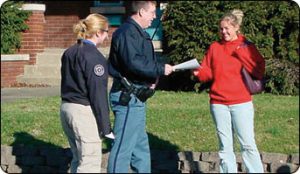
Police forge partnerships with people who live and work in the community. These partnerships can help develop trust and transparency, leading to more efficient and effective policing and better community-police relationships.
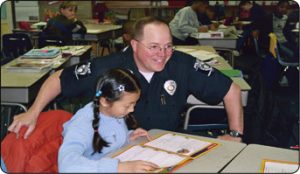
Police often partner with entities such as support groups, issue and advocacy organizations, and the faith-based community. These partnerships allow for more coordinated and targeted use of shared resources.

Police develop partnerships with the small business community, large corporations, and local chamber of commerce and visitors bureaus.

Police develop partnerships with local newspapers, television outlets, radio stations, and bloggers. These lead to greater transparency, better public image, and more effective crime-solving.
Problem Solving
Community policing officers are encouraged to proactively identify problems, develop innovative responses, and evaluate the results. Crime fighting is more proactive than reactive.

Officers identify and prioritize problems, determine the nature of the problem, and the scope of the problem.

Officers research what is known about the problem to gain a thorough understanding of all possible contributing factors.
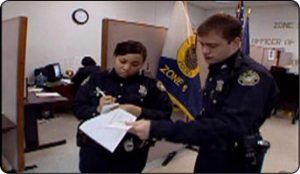
Officers develop solutions to bring about lasting reductions in the number and extent of problems.

Officers evaluate the success of the response and make adjustments as necessary.
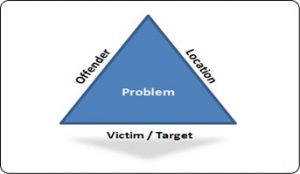
Officers look for vulnerabilities in the crime triangle. Problems can be solved by disrupting the relationship among the victim, offender, and location.
Organizational Features
A variety of organizational features and characteristics help support community policing partnerships and problem-solving efforts.


A community policing structure provides line-level officers with decision-making authority and accountability. This empowers the officers who interact and build relationships with their community members on a daily basis.
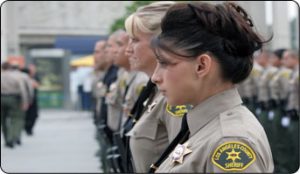
Community policing ideals are incorporated into all personnel practices including recruitment, hiring, section, training, and evaluations. The goal and emphasis of every practice is the development of a positive relationship between police and the community.
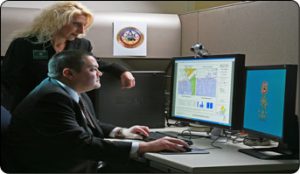
Technology plays a central role in providing access to accurate community information and enhancing two-way communication.
Community Policing in Action — Success Stories from the Field
New Brighton, Minnesota, Neighborhood Oriented Policing
For the past 12 years, the New Brighton Department of Public Safety (DPS) has employed its Neighborhood Oriented Policing (NOP) … Continue reading New Brighton, Minnesota, Neighborhood Oriented Policing
Richmond, Virginia, Crime Sweep
Richmond Crime Sweep is a partnership of law enforcement agencies that was formed to improve the quality of life for … Continue reading Richmond, Virginia, Crime Sweep
Waterbury, Connecticut, Balancing Proactive and Reactive Policing
The Waterbury, Connecticut, Police Department attempts to change the stereotype of how police officers are generally viewed by the public. … Continue reading Waterbury, Connecticut, Balancing Proactive and Reactive Policing
Des Plaines, Illinois, Senior Citizen Academy
Des Plaines, Illinois, is a suburb of Chicago with a population of 58,000 people. The senior citizen population is larger … Continue reading Des Plaines, Illinois, Senior Citizen Academy
Columbia, Missouri, Customer Service-Oriented Policing
Columbia, Missouri, is a college town with a vibrant community, a large student population, and a thriving downtown business district. … Continue reading Columbia, Missouri, Customer Service-Oriented Policing
Chicago, Illinois, CeaseFire Program
CeaseFire Chicago recruits and trains a new cadre of workers called “violence interrupters.” A former gang leader, now a supervisor … Continue reading Chicago, Illinois, CeaseFire Program
Skills and Abilities
Being an effective community policing officer involves a unique blend of skills. Learn what makes a good community policing officer and explore ways to you can develop the needed skills.
Resources
Ready to learn more about community policing? Check out our list of additional reading and resources.
